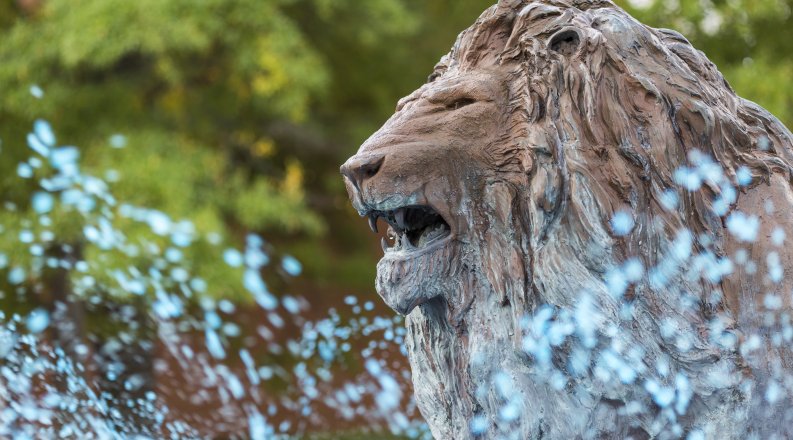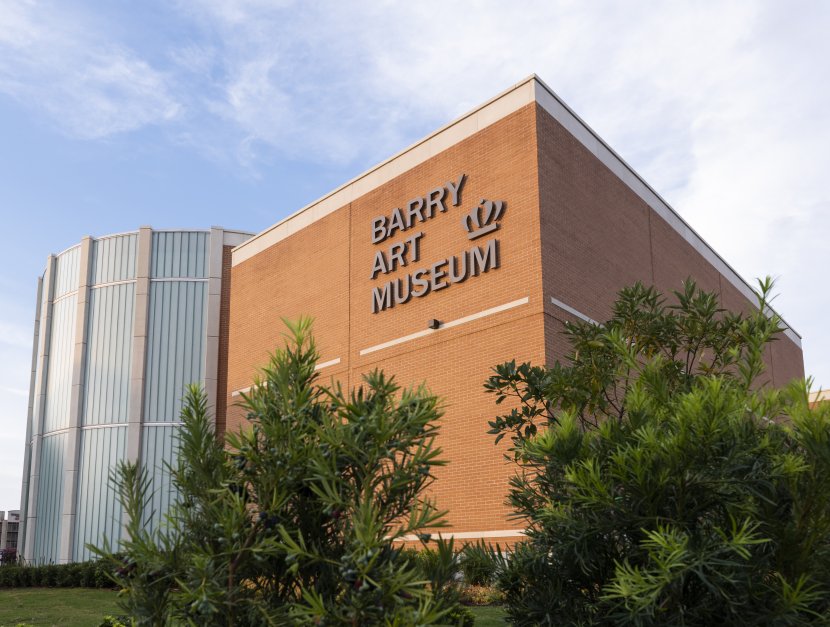By Joe Garvey
Russell Stanger worked with some of the most renowned symphony composers of his generation, including Leonard Bernstein, Arthur Fiedler, Aaron Copeland, Charles Munch and Eugene Ormandy. He gained international acclaim.
But he also left a significant mark in Norfolk, where he directed the Norfolk (now Virginia) Symphony for 14 years, enjoyed a long relationship with Old Dominion University and lived for the final 39 years of his life.
Maddie Dietrich, music special collections and research specialist, has culled through a trove of photographs, recordings, music notations, original scores and other memorabilia that Stanger donated to the ODU Libraries to put together an exhibition on his life and career at the F. Ludwig Diehn Center for the Performing Arts. It is called "Russell Stanger: Portrait of an American Conductor."
The libraries had acquired the Stanger Papers Collection when the Diehn Composers Room opened in 1997, Humanities Librarian Elizabeth Hogue said. He subsequently donated much more of his material. He died in 2015 at age 90.
Dietrich said the exhibition, which will be on display through the end of the fall semester, contains eight displays - four in the main atrium that show a chronology of "the rise of his career" from the late 1940s through the early 1960s, and four in the Composers Room that focus on smaller and anecdotal moments. There's also an extensive amount of material online.
"It's the story of a young man who came up through some of America's most prestigious music institutions and during that time made contacts with very important conductors," Dietrich said.
She initiated the project to document Stanger's and Bernstein's friendship in conjunction with the 100thanniversary of Bernstein's birth, which was Aug. 25. Stanger and Bernstein had been friends and professional collaborators dating from the early 1950s.
But through her research, Dietrich discovered so much more about Stanger.
Dietrich's exhibition divides Stanger's life into three parts - his pre-Virginia days, his career with the local symphony and his post-symphony life, when "he remained quite involved here at the University and in Hampton Roads and became increasingly involved with concerts and clinics in Japan."
Stanger, a Massachusetts native who started playing the piano at age 6 and studying the violin at 8, began building his career after graduating from the New England Conservatory of Music. His education was interrupted by World War II, when he and his twin brother Herb served as naval aviation radiomen in the Pacific and participated in the liberation of the Philippines.
In the early 1950s, as he began meeting and working with top composers, "Stanger is never in the middle of anything," Dietrich said. "He's off to the side, studying, keeping his mouth shut. Listening, waiting for opportunities to just jump in. You see that in many of these early photos."
A key moment in his career came when Bernstein hired him to be an assistant conductor with the New York Philharmonic for the 1960-61 season. "That was the biggest feather in his cap," Dietrich said.
The exhibit includes an anecdote from Stanger about filling in at the last minute for Austrian conductor Carl Bohm, who had contracted a serious eye infection.
"I was returning from a walk on Riverside Drive, where I lived, when I heard the telephone ringing off the hook," Stanger wrote. "'Get you tails on!'" came the anxious voice of Carlos Moseley, the business manager. 'You're going on to substitute for Bohm, and there's not going to be any rehearsal.' I conducted the Brahms Fourth Symphony - no rehearsal - and I'll always remember going to the famous concert master John Corigliano ... I was full of perspiration and anxiety. 'What had he thought of the performance?' I asked him. And Corigliano says, 'Look around. See how gently the men were putting their instruments away in their cases. These are hard veterans. You've obviously moved them. Congratulations. They very seldom do this."'
Stanger also served as a guest conductor for other leading orchestras in North America and Europe, among them the Philadelphia Orchestra, the London Philharmonic and the Bilbao Symphony in Spain.
He was hired to lead the Norfolk Symphony in 1966. During his tenure, the symphony held its first open auditions and hired its first African-American musicians. He conducted the orchestra at the opening of Chrysler Hall in 1972 and the at the first Harborfest in 1979. He also met his wife, Mildred, in Norfolk. She died in 2003.
"He was never an elitist; he was big on bringing music to everyone, the common man," Dietrich said. "And he took that really seriously in Hampton Roads, not only with the military, but with public school systems and the colleges and universities as well. And he would also go out and do clinics and concerts. He understood the importance of music education in the American school system, and he believed in it strongly."
He also began his relationship with ODU.
"As soon as he got here, he started putting feelers out," Dietrich said. "I've got a couple letters from ODU presidents commenting on whether Stanger recommends this professor for a position here. He had his hands in kind of the behind-the-scenes business."
Hogue met Stanger in the early 2000s when the Diehn Composers Room featured events to promote composers and their works. She also interviewed him for a two-part oral history, which is part of the Virginia Symphony Orchestra Oral Histories collection.
She said she never called him Russell.
"It was always Maestro, as he preferred to be called. He not only deserved that respect, but somehow you felt it fit him like a glove," she said. "He exuded the air of dignity and savoir faire to anyone he met. Maestro Stanger was also very friendly and talkative."
Stanger helped Diehn come up with a vision for the Diehn Composers Room. His friendship with Diehn, which began in the 1970s, was critical to his decision to donate his collection to ODU.
"He was given opportunities but didn't squander those opportunities," Dietrich said. "He seized on them and maximized them. I think the story of Russell Stanger is the story of a man who really made the most of what he had."
The Russell Stanger Papers are available to the public by appointment. Contact ODU Libraries Special Collections and University Archives: https://www.odu.edu/library/special-collections.
Listed below are online links to the collection:
Collection guide for the Russell Stanger Papers
https://www.lib.odu.edu/archon/?p=collections/findingaid&id=3&q=&rootcontentid=6681#admininfo
Russell Stanger Photographic Collection
http://dc.lib.odu.edu/cdm/landingpage/collection/stanger
Previous online exhibit (2011)
http://www.lib.odu.edu/diehn/exhibitsevents/StangerHarth/Stanger.html
Oral History (conducted by Humanities Librarian Elizabeth Hogue in 2008)
part 1
http://dc.lib.odu.edu/cdm/compoundobject/collection/vsooh/id/318/rec/22
part 2
http://dc.lib.odu.edu/cdm/compoundobject/collection/vsooh/id/323/rec/23






